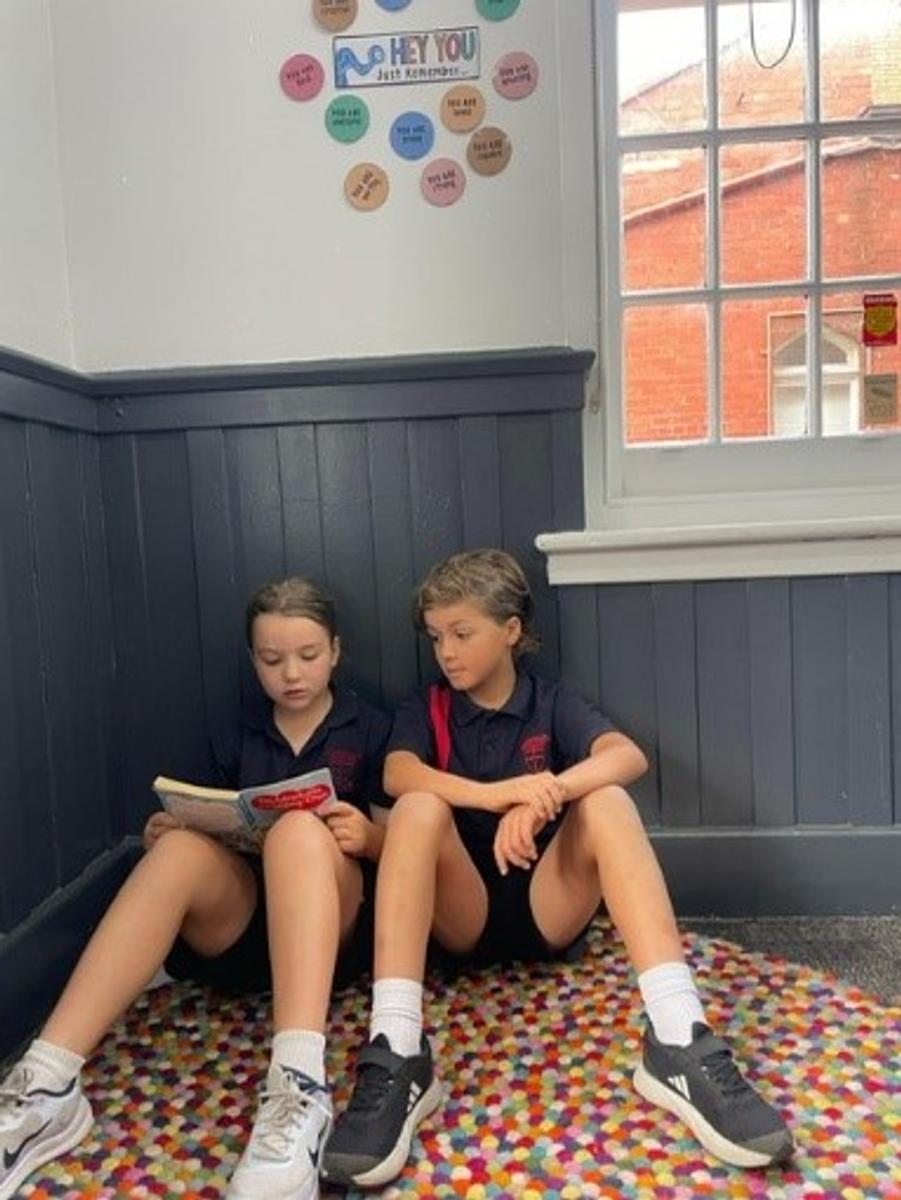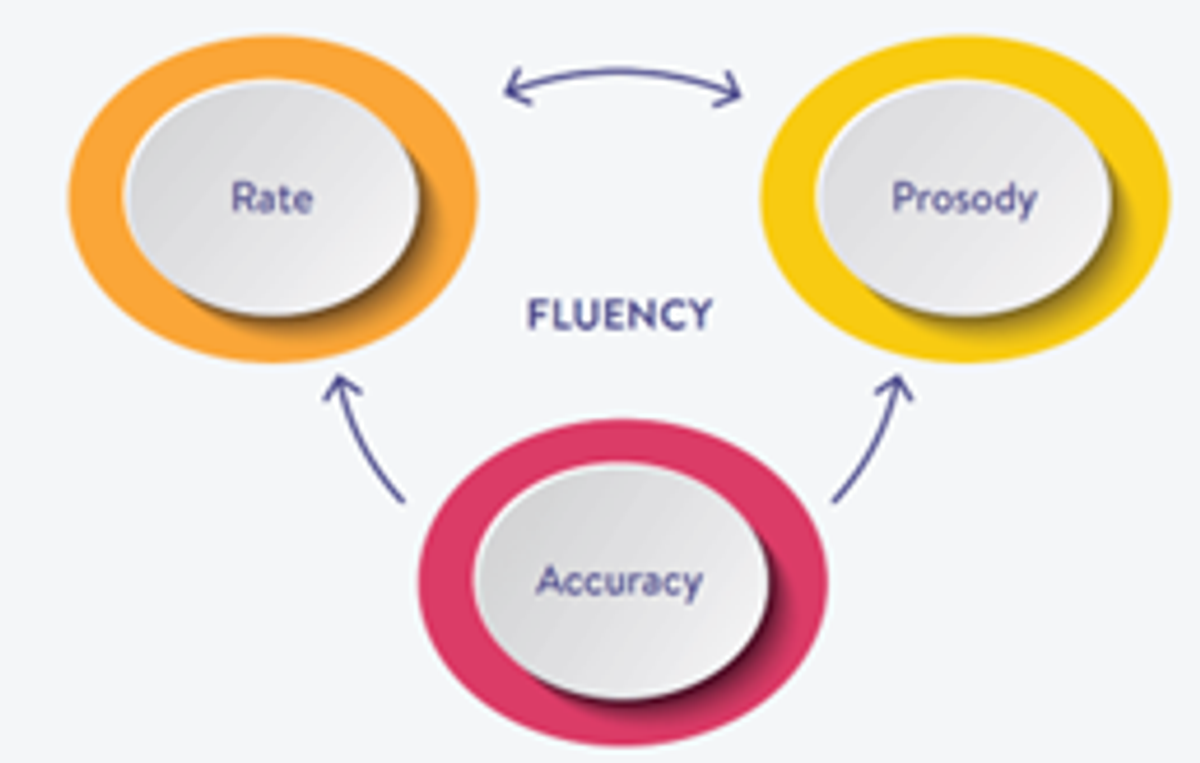Literacy

Reading Fluently
Dear families, I couldn’t miss this opportunity to share the lovely feedback we received from one of our Year Two parents about our fluency sessions in our literacy block.
Hello Miss C
I had to speak with you about this photo.
I have noticed recently that there has been a shift in Gus's reading. He has found the full stops and reads with more of the narrator's narrative.
I asked what had changed, and he said, I read with Frankie R now, and she has taught me so much. I like reading with her.
This moment captured says it all.
It’s always wonderful to receive positive feedback about our learning programs, and this inspired me to explain the importance of fluency in reading and how we explicitly teach it at St Joseph’s.
At St Joseph’s, we have followed the Science of Reading since 2018, which incorporates explicit evidence-based practice teaching. Everything we plan is deliberate to maximise our students' learning. A proportion of the Literacy session is focused on developing reading fluency. The 2024 updated Victorian Curriculum English 2.0 has recognised and incorporated the importance of developing reading fluency skills for Prep to Year 6 students.
Why is reading fluently important?
When students can read fluently, it’s easier to understand what they’re reading. They also read aloud easily and with expression, making reading much more enjoyable! Fluency requires the rapid use of punctuation and the determination of where to place emphasis or where to pause to make sense of a text. Readers need to carry out these aspects of interpretation rapidly, and usually without conscious attention.
Less fluent readers read more slowly and word by word. They must focus their attention on figuring out the words, leaving them little attention to understand the meaning of the text. Comprehension and motivation to read can suffer. Of course, beginning readers aren’t fluent yet, but by the end of first grade, kids should be reading books at their grade level with ease and expression.
Fluency develops gradually over time and through practice. At the earliest stage of reading development, students’ oral reading is slow and laboured because students are just learning to “break the code” — to attach sounds to letters and to blend letter sounds into recognisable words.
When fluent readers read silently, they recognise words automatically. They group words quickly to help them gain meaning from what they read. Fluent readers read aloud effortlessly and with expression. Their reading sounds natural, as if they are speaking.
Because fluent readers do not have to concentrate on decoding the words, they can focus their attention on what the text means. They can connect the ideas in the text and their background knowledge. In other words, reading fluently improves comprehension of a text.
How do we teach reading fluency at St Joseph’s?
At St Joseph’s, we explicitly teach the three components of fluency: accuracy, rate, and prosody (or expression).
Accurate reading requires students to be able to pronounce written words correctly. Correct pronunciation of a word allows the young reader to access its meaning from their existing oral vocabulary – the words they use and recognise in spoken language.
The rate at which students read is essential because slow reading hinders comprehension. Automaticity is the effortless and autonomous recognition and production of a word. Effortlessness is apparent when we see someone reading for long periods without fatigue and reading easily and naturally.
Prosody is the third element of text reading fluency. It means reading with expression—with the appropriate rhythm, tone, pitch, pauses, and stresses for the text. Prosody depends on both accuracy and rate. To read with expression, the student must be able to read words efficiently and break the text into meaningful syntactic and semantic units.
The students at St Joseph’s practice reading fluency for at least three sessions per week using the following methods.
Choral Reading.
Choral reading is when students read aloud in unison as a whole class or in a group. Choral reading helps build fluency, self-confidence, and motivation. The teacher chooses a book or passage for the entire class and models how to read accurately with prosody and at the appropriate rate. Students then read in unison.
Paired/Partner Reading.
In the paired/partner reading strategy, two students read the same passage aloud to each other. Teachers explicitly teach and model an error-correction procedure to use when supporting each other’s reading (re-reading misread words; signals for difficulty). A routine is established for students, so they know the step-by-step process for paired reading. (Will they read out loud, simultaneously? Will they take turns with each person reading a paragraph or a page?)
Repeated Reading
Repeated Reading is an effective, evidence-based approach to fluency instruction that involves re-reading a text several times over the week. Again, the teacher models fluent reading, and then the students read either independently, with a partner, or chorally. The teacher provides positive feedback and corrections to students.
If you have any questions about our fluency reading program or any of our other teaching methods in Literacy, please don’t hesitate to contact me.
Sincerely yours,
Amanda Jackson,
Structured Literacy Leader


